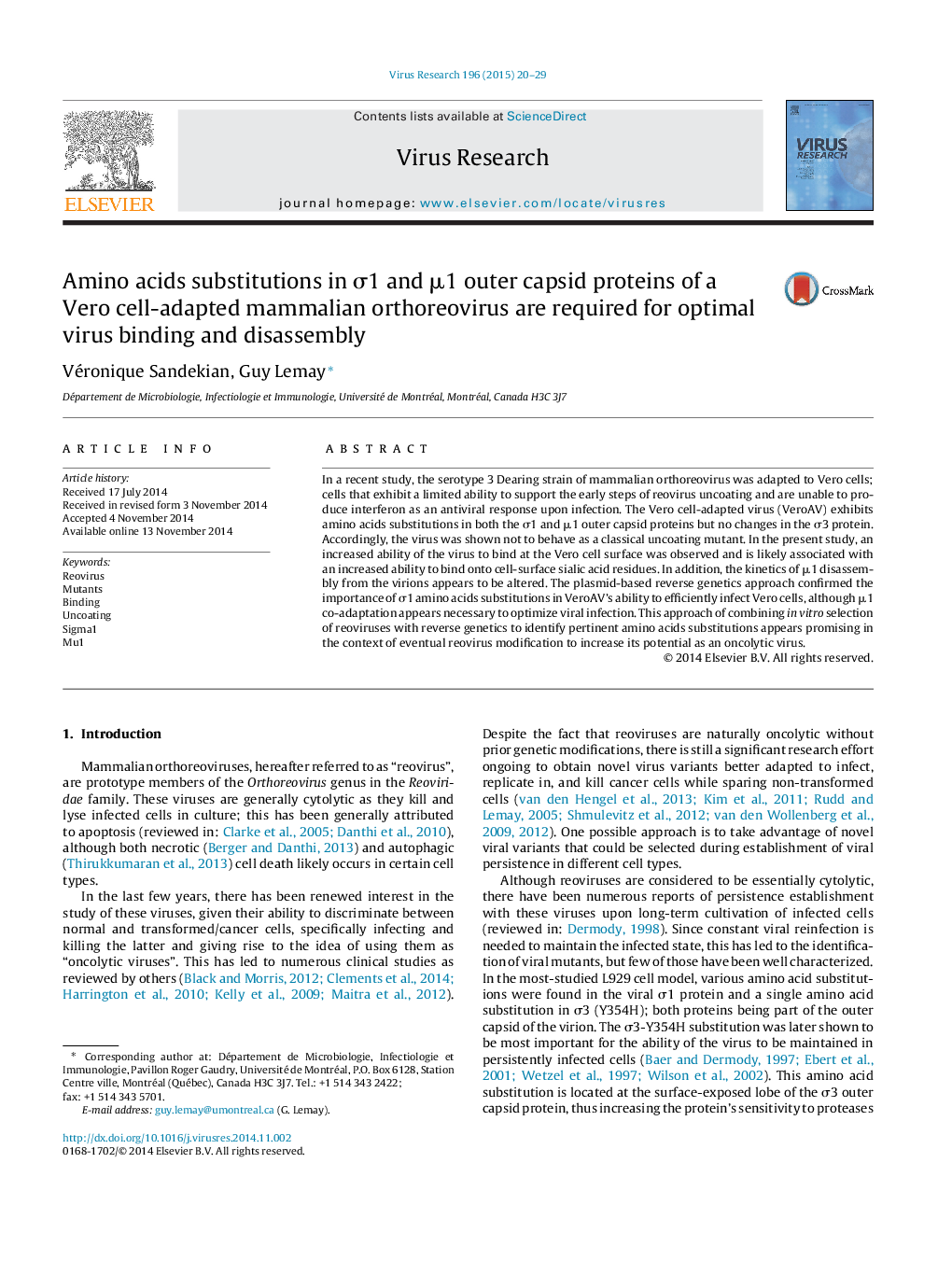| Article ID | Journal | Published Year | Pages | File Type |
|---|---|---|---|---|
| 6142261 | Virus Research | 2015 | 10 Pages |
Abstract
In a recent study, the serotype 3 Dearing strain of mammalian orthoreovirus was adapted to Vero cells; cells that exhibit a limited ability to support the early steps of reovirus uncoating and are unable to produce interferon as an antiviral response upon infection. The Vero cell-adapted virus (VeroAV) exhibits amino acids substitutions in both the Ï1 and μ1 outer capsid proteins but no changes in the Ï3 protein. Accordingly, the virus was shown not to behave as a classical uncoating mutant. In the present study, an increased ability of the virus to bind at the Vero cell surface was observed and is likely associated with an increased ability to bind onto cell-surface sialic acid residues. In addition, the kinetics of μ1 disassembly from the virions appears to be altered. The plasmid-based reverse genetics approach confirmed the importance of Ï1 amino acids substitutions in VeroAV's ability to efficiently infect Vero cells, although μ1 co-adaptation appears necessary to optimize viral infection. This approach of combining in vitro selection of reoviruses with reverse genetics to identify pertinent amino acids substitutions appears promising in the context of eventual reovirus modification to increase its potential as an oncolytic virus.
Related Topics
Life Sciences
Immunology and Microbiology
Virology
Authors
Véronique Sandekian, Guy Lemay,
